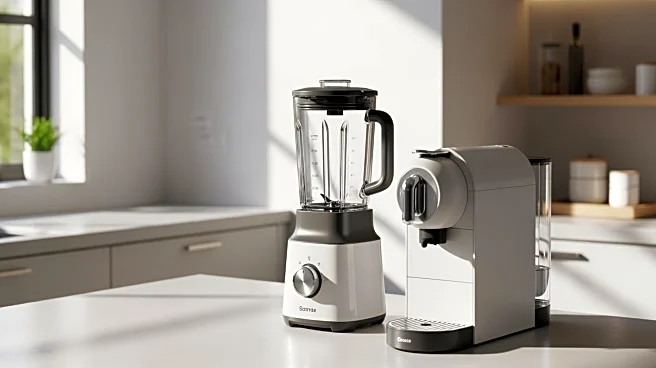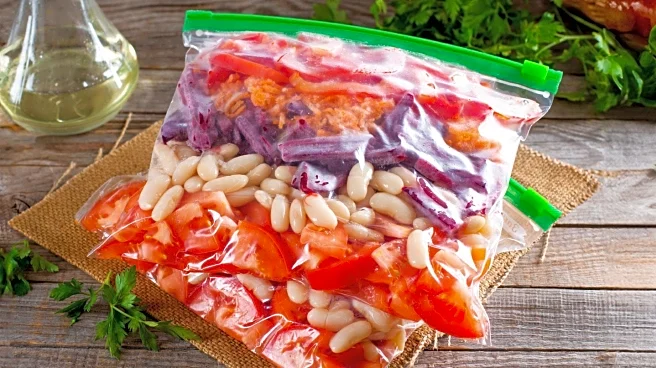What's Happening?
A range of small kitchen appliances, including Vitamix blenders, Instant Pots, and Ninja multi-cookers, are being highlighted for their ability to save time and counter space in meal preparation. These
appliances offer various functionalities such as blending, chopping, pressure cooking, and air frying, making them versatile tools for home cooks. The Instant Pot, for example, is a seven-in-one multi-cooker that can perform tasks like pressure cooking and slow cooking, while the Vitamix blender provides high-performance blending capabilities. These appliances are designed to streamline cooking processes, allowing users to prepare meals more efficiently and with less effort.
Why It's Important?
The introduction of these small appliances is significant as they cater to the growing demand for convenience and efficiency in home cooking. With busy lifestyles, many individuals seek ways to reduce time spent in the kitchen without compromising on meal quality. These appliances not only save time but also offer healthier cooking options, such as air frying, which reduces the need for oil. The versatility of these tools can lead to more creative cooking experiences and potentially reduce reliance on takeout or pre-packaged meals, promoting healthier eating habits.
What's Next?
As these appliances become more popular, manufacturers may continue to innovate, offering even more advanced features and compact designs. Consumers can expect to see further integration of smart technology, allowing for remote operation and recipe suggestions. Additionally, the market for small kitchen appliances is likely to expand, with more brands entering the space and offering competitive pricing. This could lead to increased accessibility for consumers looking to enhance their cooking experience.
Beyond the Headlines
The rise of small kitchen appliances also reflects broader trends in consumer behavior, such as the preference for multifunctional products and the emphasis on sustainability. Many of these appliances are designed to be energy-efficient and reduce food waste, aligning with environmental concerns. Furthermore, the convenience offered by these tools may influence cultural shifts in cooking practices, encouraging more people to cook at home and experiment with new recipes.











